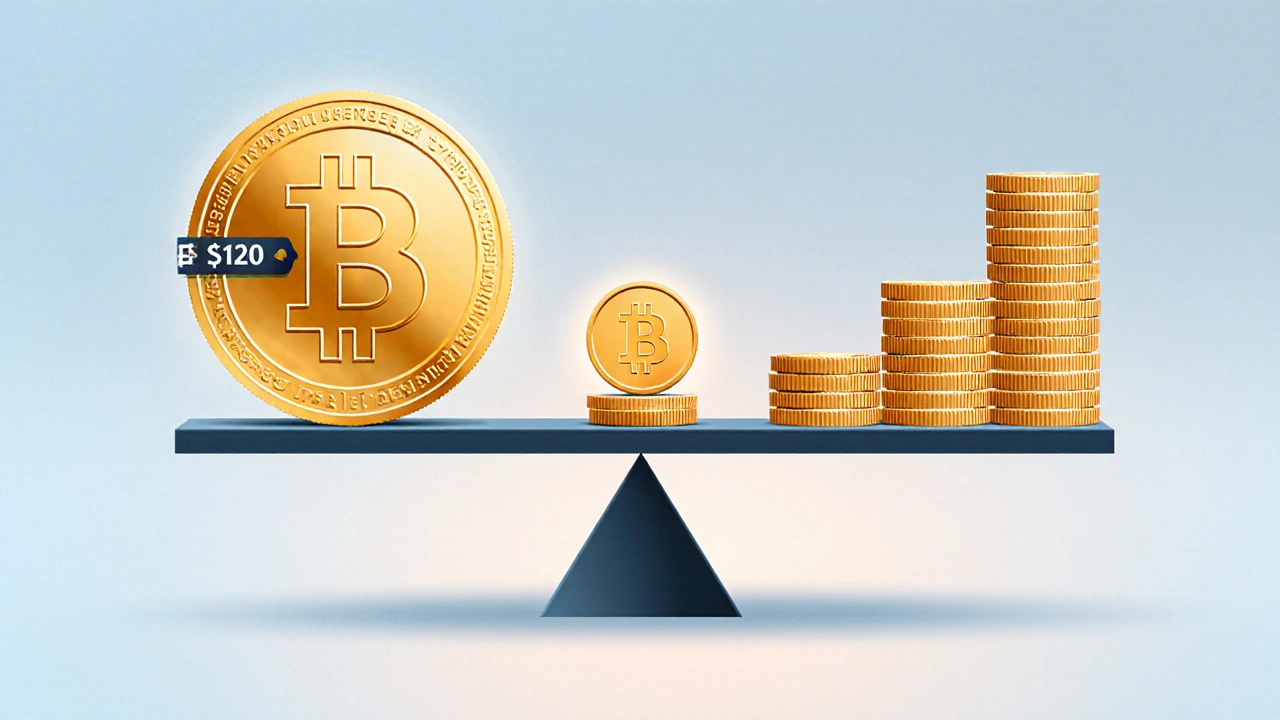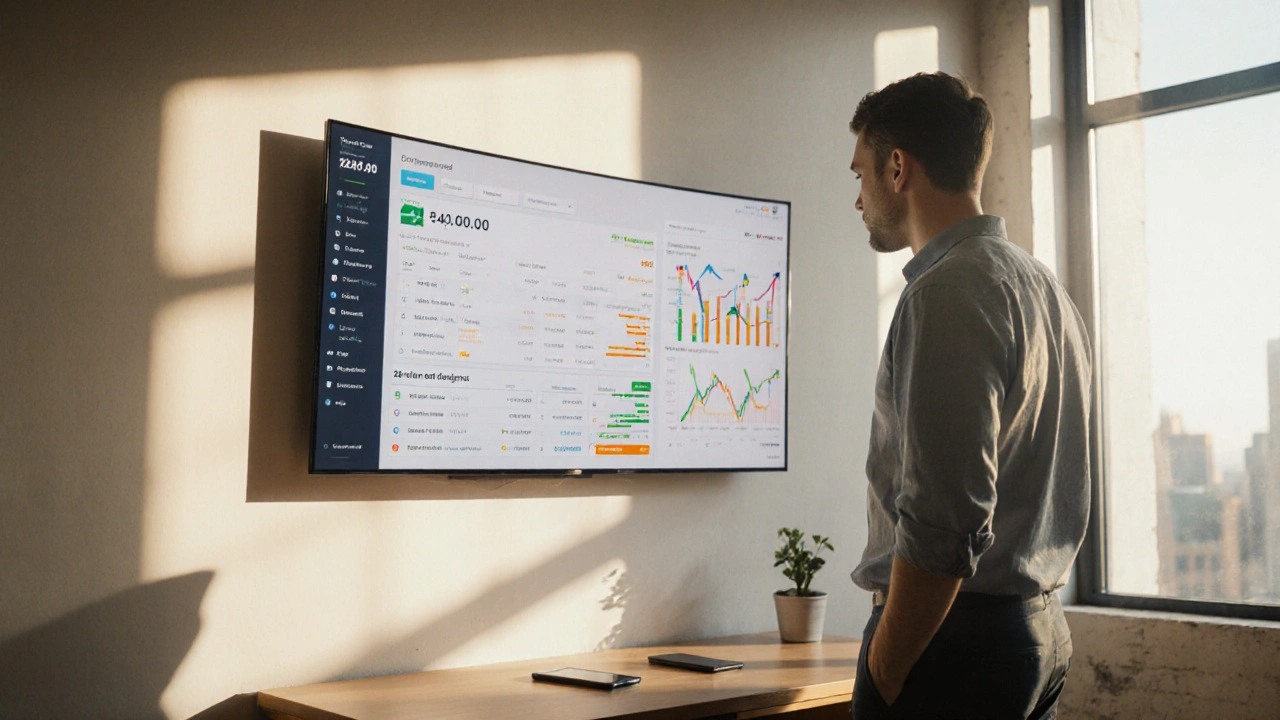When you open a crypto dashboard and see Bitcoin at #1, Ethereum at #2, and a handful of new tokens sliding into the top 20, you might wonder: what exactly is driving that order? The answer lies in the coin market cap ranking, a metric that blends price with supply to give a snapshot of a digital asset’s size and influence.
What is CoinMarketCap?
CoinMarketCap is a widely used cryptocurrency data aggregator that tracks price, volume, circulating supply, and market capitalization for thousands of digital assets. Founded in 2013, it pulls data from exchanges worldwide and Standardizes it into a single, searchable platform.
The site’s flagship feature is its ranking list, which orders coins by market cap. Users rely on this list to gauge which assets dominate the market, spot emerging trends, and decide where to allocate funds.
How is Market Capitalization Calculated?
Market cap isn’t a mysterious number; it’s simply the current price multiplied by the number of coins that are actively circulating.
Circulating supply refers to the coins or tokens that are available for public trading
For example, if Bitcoin trades at $30,000 and there are 19 million BTC in circulation, the market cap is $570billion (30,000×19,000,000). Contrast that with Total supply the maximum number of coins that will ever exist, including those locked or reserved
Using circulating supply keeps the metric realistic-locked coins can’t be bought or sold, so they don’t affect market dynamics.
Why Rankings Follow Market Cap, Not Price Alone
Price alone can be misleading. A token priced at $0.10 could have a massive supply, making its total value huge, while a $50,000 coin with a tiny supply may hold a smaller market cap.
CoinMarketCap ranks assets by the product of price and circulating supply because that figure reflects the total economic weight of the asset in the market. This approach also smooths out wild price spikes that don’t translate into real market power.
Reading the Ranking: What the Numbers Reveal
The ranking list provides more than a simple leaderboard. It shows how much of the total crypto market each coin claims. For instance, if Bitcoin holds a 45% share, a dip in its price instantly nudges the entire market down.
Beyond share, the list includes 24‑hour volume, which tells you how much of the coin is changing hands daily. High volume usually means better liquidity, making it easier to enter or exit positions without slippage.
Pay attention to the rank change the movement of a coin up or down the list over a given period
A sudden jump could signal a breakout, a new partnership, or an influx of investor interest, while a drop might warn of waning momentum.

Practical Uses for the Ranking
Investors and analysts use the ranking in several ways:
- Market exposure assessment: By adding up the market caps of the top ten coins, you can see how concentrated the market is. A high concentration means the market is driven by a few giants.
- Portfolio diversification: Selecting assets from different rank tiers spreads risk. A mix of high‑cap stalwarts and mid‑cap innovators balances stability with growth potential.
- Trend spotting: Consistent upward movement in rank over weeks often precedes broader adoption or technical upgrades.
- Risk management: Low‑cap coins (rank > 200) tend to be more volatile and can be prone to pump‑and‑dump schemes.
Remember, rankings are snapshots. Always combine them with on‑chain data, team background, and use‑case analysis before making decisions.
Top 5 Coins - A Quick Comparison
| Rank | Coin | Price (USD) | Market Cap (USD) | Circulating Supply | 24h Volume (USD) |
|---|---|---|---|---|---|
| 1 | Bitcoin | $31,200 | $583B | 18.7M BTC | $32B |
| 2 | Ethereum | $2,120 | $254B | 119.8M ETH | $22B |
| 3 | Binance Coin | $340 | $64B | 188.5M BNB | $1.8B |
| 4 | Solana | $22 | $9.9B | 450M SOL | $750M |
| 5 | Cardano | $0.88 | $31B | 35.2B ADA | $600M |
This table highlights why market cap matters: even though Solana’s price looks modest, its massive supply pushes its market cap into the low‑double‑digit billions, keeping it in the top‑five.
Common Misconceptions and Pitfalls
Newcomers often mistake a high rank for guaranteed safety. That’s not true. Here are three traps to avoid:
- Volume manipulation: Some projects inflate their 24‑hour volume using wash trading on obscure exchanges. Inflated volume can falsely boost a coin’s perceived liquidity.
- Supply surprises: Tokens that lock large portions of their supply may release them later, dramatically expanding circulating supply and diluting market cap.
- Rank churn: A sudden rise from rank 150 to 30 can be a pump‑and‑dump scheme. Verify the underlying news, development activity, and community sentiment before jumping in.
Always cross‑check ranking data with on‑chain explorers and reputable news sources. The rank is a useful guide, not an absolute rule.

How to Keep Track of Ranking Changes
Most crypto wallets and portfolio trackers let you subscribe to rank alerts. Set up notifications for:
- Coins breaking into the top10 - signals growing interest.
- Coins dropping out of the top100 - could indicate waning support.
- Major rank shifts (>10 places) - often coincide with protocol upgrades or regulatory news.
Combine alerts with a weekly review of the CoinMarketCap “Historical Snapshot” feature, which lets you compare current ranks with those from a month, quarter, or year ago.
Next Steps for Crypto Enthusiasts
If you’re ready to use rankings in your own research, follow this short checklist:
- Identify your investment horizon (short‑term swing vs. long‑term hold).
- Select a mix of high‑cap (top10) and mid‑cap (rank11‑50) assets.
- Monitor rank change and 24‑hour volume weekly.
- Validate any sudden rank movement with news, on‑chain data, and community sentiment.
- Adjust allocation based on how the overall market share shifts among the top20.
Sticking to a systematic approach helps you avoid emotional decisions driven by headline‑grabbing rank jumps.
Frequently Asked Questions
What does a higher coin market cap ranking indicate?
A higher rank means the coin’s total market value (price × circulating supply) is larger than most other assets. It generally suggests greater liquidity, broader adoption, and more influence over the overall crypto market.
Can a low‑priced coin have a high ranking?
Yes. If a coin has a massive circulating supply, its market cap can surpass that of a high‑priced but scarce asset, pushing it higher in the ranking.
How often does CoinMarketCap update its rankings?
Rankings refresh every minute for most major coins, reflecting real‑time price and supply changes across integrated exchanges.
Should I base my investment decisions solely on ranking?
No. Rankings give a quick size snapshot, but you also need to evaluate technology, team, regulation, and market sentiment before committing funds.
What are the risks of chasing a sudden rank jump?
Rapid rank spikes often accompany hype‑driven price pumps. Without solid fundamentals, the asset can crash just as quickly, leading to significant losses.

